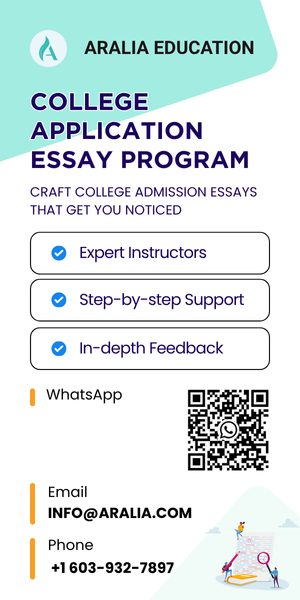1. What is the Point of View
Point of View, or POV, is standpoint, in short, where the writer points the reader’s sight. In other words, point of view is what the character or the narrator telling the story can see because the author chooses “who” to tell the story to the reader. Authors have various ways to tell the story, from the protagonist’s point of view to another character’s point of view. Many people have mistaken the narrator for the author. The author creates the story, but the narrator tells the story to the reader.
An example of a point of view can be:
“I went to the woods because I wished to live deliberately, to front only the essential facts of life, and see if I could not learn what it had to teach, and not, when I came to die, discover that I had not lived. (Walden, 90)”
Henry David Thoreau wrote a story of his solidarity life near Walden Pond. This example is unique because Thoreau is both the author and the story’s narrator.
2. What’s the difference between Perspective and Point of View?
In class, you will hear writing from your perspective and writing from your point of view. We use them interchangeably, but they are different from each other. So, what’s the difference between the two?
Perspective in fiction writing is how the character views, processes, and reacts to what happens in the story. In comparison, point of view focuses on the character’s standpoint; therefore, the POV is the type of narration used to tell the story. POV is categorized into first person, second person, and third person.
Therefore, perspective and point of view are fundamentally two different things. Characters in the story have different perspectives, or how they feel and perceive certain situations and experiences. But the author has the decision to determine how he/she wants to tell the thought process and feelings of each character. The author can write from the protagonist’s point of view (first-person POV), such as “I feel horrible about what happened to my girlfriend and her family.” The author can write from the second person POV, such as “You stood there. You froze. Your wife looks so beautiful in white, and you can’t take your eyes off her”. The author can write from the third person point of view, such as “Rushing outside of the train, he avoided making eye contact with the person.”
3. Three Types of Point of View
First Person
In this point of view, the narrator is the actual character in the story. Students can identify the first person’s POV through the words “me,” “myself,” and “I.” The character in the story can be the protagonist or someone close to the protagonist. Many genres use the first-person point of view to tell the story because this is the most intimate way to connect with the reader. If done well, the reader can have a deeper look into the character’s train of thought, relate to the experience, and feel that they are experiencing what the narrator is experiencing. To master this way of telling the story, the author must separate their understanding from the protagonist’s story. Since the author knows the plot, they may include too much information for the protagonist even though the protagonist is not at the center of all action.
Nick Carraway of The Great Gatsby (1925) by F. Scott Fitzgerald is also a famous novel with a first-person narrator. An example of first-person POV is “On Earth We’re Briefly Gorgeous” by Ocean Vuong. The story is written in a letter from a Vietnamese American son – Ocean Vuong – to his illiterate mother.
“In Vietnamese, the word for missing someone and remembering them is the same: nhớ. Sometimes, when you ask me over the phone, Có nhớ mẹ không? I flinch, thinking you meant, Do you remember me?
I miss you more than I remember you.”
Second Person
The second POV is commonly found through the pronoun “you” because the story is told to the reader. This POV is not common in fiction unless the writer wants to speak to the reader personally. This POV usage can draw the reader into the story and make them feel like a part of it.
An example of the second person POV in the novel is Bright Lights, Big City by Jay McInerney. The book tells the story of a young man who is a drug addict working for a newspaper in Manhattan by day while bar hopping during the night.
“You have friends who care about you and speak the language of the inner self. You have avoided them of late. Your soul is as disheveled as your apartment, and until you can clean it up a little you don’t want to invite anyone inside.”
Third Person
Third-person is another popular point of view for writers. Students can identify third-person POV using “he/she/they/it” or the character’s name.
Third-person omniscient
Within third-person POV, there is a third-person omniscient narrative, in which the narrator knows everything about the character and the story, as well as their thoughts and feelings. Please think of this narrative type as when the author tells the whole story but doesn’t want to reveal themselves to the reader.
Example: Pride and Prejudice – Jane Austen (1813)
“Mr. Bennet was so odd a mixture of quick parts, sarcastic humour, reserve, and caprice, that the experience of three-and-twenty years had been insufficient to make his wife understand his character. Her mind was less difficult to develop. She was a woman of mean understanding, little information, and uncertain temper. When she was discontented, she fancied herself nervous. The business of her life was to get her daughters married; its solace was visiting and news.”
This paragraph, and the book, follow the first-person omniscient narrator because the narrator allows the reader to know everything about Mr. Bennet and Ms. Bennet, the main character, and what they think.
According to The Balance, an example of this POV is Leo Tolstoy’s novel “Anna Karenina” which is told from multiple points of view. Anna Karenina tells a story of an affair between Anna and cavalry officer Vronsky that scandalizes the social circles of Saint Petersburg and forces the young lovers to flee to Italy in search of happiness.
“Exactly at midnight, when Anna was still sitting at her desk finishing a letter to Dolly, she heard the measured steps of slippered feet, and Alexei Alexandrovich, washed and combed, a book under his arm, came up to her.”
Third-person limited
Third-person limited is another kind of third-person POV. Unlike third-person omniscient, third-person limited is when the author remains third person to only one character and freely expresses the character’s thoughts and feelings about the situations and other characters.
Example: 1984 by George Orwell
“It depicted simply an enormous face, more than a meter wide: the face of a man of about forty-five, with a heavy black mustache and ruggedly handsome features… It was one of those pictures which are so contrived that the eyes follow you about when you move. BIG BROTHER IS WATCHING YOU, the caption beneath it ran.”
In this paragraph, Winston, the main character, describes the poster of Big Brother in the hallway and his thought.
Third-person multiple
Third-person multiple is another variation of third-person POV. In this case, the narrator knows the thoughts and feelings of more than one character in the story, but not all characters.
Example: In the book “The Lion, The Witch, and The Wardrobe” written by C.S.Lewis, the author describes the journey of four siblings: Peter, Susan, Edmund, and Lucy in the setting of wartime evacuation.
Now that you have a solid understanding of the point of view in writing, it’s time to put it into practice. You can experiment with each POV by writing novels or short stories. It may be unnatural because you are not familiar but observe each character’s change in emotions and thoughts. You will choose your favorite point of view with more practice and then develop your writing style.
Become a better writer and participate in competitive writing competitions by registering for Aralia’s writing classes
Students will learn the nuances of language, including figurative language, effective structuring, and specific forms to apply to their own piece(s). Students will work directly with both literary and media texts to plan and write their piece(s). This class will also help the students write with an aim for an audience as their submission for nation-wide and international writing competitions that are timely with the course schedule.
This course helps students develop and improve their writing skills to prepare students for higher education courses. The methodology emphasizes the ability to read critically, think critically, and write critically. Students will learn informative, narrative, descriptive, creative, and persuasive essay writing skills. Students will learn how to brainstorm, structure and outline, form an argument, defend it, incorporate academic sources, and develop a clear, articulate writing style. The focus will be on the writing process, intended audience, consistent tenses, point of view, correct grammar uses, building vocabulary, appropriate style, and proper research and citation protocols.











